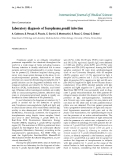
Laboratory diagnosis
-
Pneumonia is a potentially fatal disease that greatly compromises the health of children. Utilizing laboratory tests is extremely beneficial in the diagnosis, monitoring, and prognosis determination of the condition. In the realm of pediatric pneumonia, effective diagnostic procedures include assessments for albumin levels and iron deficiency anemia.
 7p
7p  vinara
vinara
 11-01-2025
11-01-2025
 2
2
 1
1
 Download
Download
-
The consequences of tuberculosis on human society are immense. Tuberculosis remains a major cause of morbidity and mortality in many countries and a significant public health problem worldwide. Active tuberculosis is diagnosed by detecting Mycobacterium tuberculosis complex bacilli in specimens from the respiratory tract (pulmonary TB) or in specimens from other bodily sites (extra pulmonary TB).
 5p
5p  viuchiha
viuchiha
 06-01-2025
06-01-2025
 2
2
 1
1
 Download
Download
-
Bacterial infections have a substantial impact on global health and can become serious if misdiagnosed with several diseases related to the central nervous, cardiovascular, and respiratory systems. The prognosis in patients with infectious disease strongly depends on early diagnosis and appropriate antibiotic therapy. We aimed to compare the accuracy of genus and species-level identification bacteria using biochemical testing and 16S rRNA sequence analysis.
 8p
8p  viharuno
viharuno
 03-01-2025
03-01-2025
 3
3
 2
2
 Download
Download
-
Epigenetic defects (gain or loss of DNA methylation) of the human ICR1 11p15 domain result in two opposite foetal growth disorders (BWS and SRS) depending on which parental allele is affected. A few deletions within ICR1 have been reported in familial BWS cases with ICR1 gain of methylation, however the mechanism(s) of the DNA methylation defects at ICR1 remains largely unknown in most BWS and SRS patients.
 83p
83p  runthenight07
runthenight07
 01-03-2023
01-03-2023
 11
11
 3
3
 Download
Download
-
The project is to transfer a small suite of laboratory technologies to develop a capability in Vietnam for the diagnosis and control of the major disease of pigs, causing financial loss to both large and small scale farmers. The project inputs do not finish at that point, but further include the provision of training to ensure that the benefits to be derived from the enhanced technological capability will be available to farmers. Hence the project spans a number of activities from the laboratory to the farm...
 16p
16p  tam_xuan
tam_xuan
 02-03-2012
02-03-2012
 65
65
 5
5
 Download
Download
-
Our experience in Vietnam proves that the diagnostic skills of field veterinarians are poor. These skills in some diagnostic laboratories are good; others suffer from inadequate facilities. The objectives are to improve the diagnostic skills of field veterinarians serving regional laboratories by means of a series of interactive workshops using the regional laboratories. In this way, the diagnostic skills at all levels will be improved. The major result will be better diagnosis of animal disease, especially infectious disease.
 14p
14p  tam_xuan
tam_xuan
 02-03-2012
02-03-2012
 60
60
 4
4
 Download
Download
-
Báo cáo khoa hoc:" Diagnosis of tuberculosis: the experience at a specialized diagnostic laboratory"
Tuyển tập báo cáo các nghiên cứu khoa học quốc tế ngành y học dành cho các bạn tham khảo đề tài: Diagnosis of tuberculosis: the experience at a specialized diagnostic laboratory
 7p
7p  panasonic01
panasonic01
 12-12-2011
12-12-2011
 52
52
 3
3
 Download
Download
-
Tuyển tập báo cáo các nghiên cứu khoa học quốc tế ngành y học dành cho các bạn tham khảo đề tài: Challenges in clinical and laboratory diagnosis of androgen insensitivity syndrome: a case report
 6p
6p  toshiba24
toshiba24
 07-12-2011
07-12-2011
 63
63
 3
3
 Download
Download
-
Tuyển tập các báo cáo nghiên cứu về y học được đăng trên tạp chí y học Critical Care giúp cho các bạn có thêm kiến thức về ngành y học đề tài: Relevance of laboratory testing for the diagnosis of primary immunodeficiencies: a review of case-based examples of selected immunodeficiencies...
 18p
18p  coxanh_5
coxanh_5
 28-10-2011
28-10-2011
 45
45
 2
2
 Download
Download
-
Tuyển tập các báo cáo nghiên cứu về y học được đăng trên tạp chí y học Critical Care cung cấp cho các bạn kiến thức về ngành y đề tài: G-CSF and IL-8 for early diagnosis of sepsis in neonates and critically ill children – safety and cost effectiveness of a new laboratory prediction model: study protocol of a randomized controlled trial [ISRCTN91123847]...
 8p
8p  thulanh17
thulanh17
 23-10-2011
23-10-2011
 55
55
 6
6
 Download
Download
-
Tuyển tập các báo cáo nghiên cứu khoa học ngành y học tạp chí Medical Sciences dành cho các bạn sinh viên ngành y tham khảo đề tài: Laboratory diagnosis of Toxoplasma gondii infection...
 2p
2p  thulanh8
thulanh8
 06-10-2011
06-10-2011
 54
54
 5
5
 Download
Download
-
Một hội nghị tư vấn kỹ thuật đã được Tổ Chức Y Tế Thế Giới (TCYTTG) triệu tập vào các ngày 25-26 tháng 10 năm 2004 để thảo luận về vai trò của xét nghiệm trong điều trị bệnh sốt rét (SR), và báo cáo của hội nghị này đã được công bố năm 2006 trong một tài liệu dầy 40 trang có tựa là “The role of laboratory diagnosis to support malaria disease management – Focus o*n the use of rapid diagnostic tests in areas of high transmission” (WHO/HTM/MAL/2006.1111). Nhằm mục đích phổ biến ý kiến của các...
 9p
9p  thiuyen8
thiuyen8
 29-08-2011
29-08-2011
 107
107
 6
6
 Download
Download
CHỦ ĐỀ BẠN MUỐN TÌM








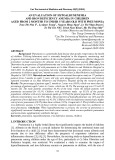
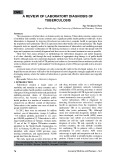
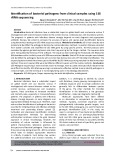



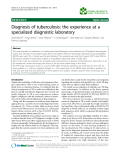
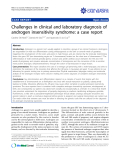
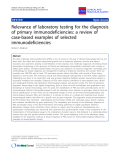
![Báo cáo y học: " G-CSF and IL-8 for early diagnosis of sepsis in neonates and critically ill children – safety and cost effectiveness of a new laboratory prediction model: study protocol of a randomized controlled trial [ISRCTN91123847]" Báo cáo y học: " G-CSF and IL-8 for early diagnosis of sepsis in neonates and critically ill children – safety and cost effectiveness of a new laboratory prediction model: study protocol of a randomized controlled trial [ISRCTN91123847]"](https://tailieu.vn/image/document/thumbnail/2011/20111023/thulanh17/135x160/cc2971_7206.jpg)
